|
European Starling Sturnus vulgaris
Estornino Pinto
|
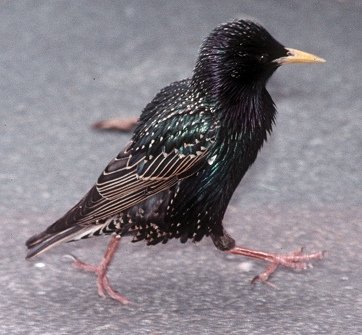 |
|
Photo: M. Oberle
|
|
European Starling Sturnus vulgaris
Estornino Pinto
|
 |
|
Photo: M. Oberle
|
|
An iridescent black bird with a pointed, yellow bill. Length: 22 cm.; weight: 77-83 g. In fresh "winter" plumage it has contrasting white or buffy spots and its bill is dark (see last photo below). Audio (M. Oberle). Many bird species can detect ultraviolet light, and male starlings appear different from females in ultraviolet light. Thus unlike humans, the Starling has little trouble in seeing the difference between males and females of its own species. This European bird has been introduced to North America and Jamaica, and takes over nest cavities from native birds---even nests of much larger species. It will often have two clutches of 4-6 eggs per year. It is a potential threat to the endangered Yellow-shouldered Blackbird and other native species that nest in cavities. It has been seen in Luquillo (a pair on 21 December 2003), Boquerón and Cabo Rojo---close to the breeding grounds of the Yellow-shouldered Blackbird---and has also been reported from the Virgin Islands. The detection of a European Starling in the West Indies represents an ornithological emergency requiring an immediate report to the relevant resource management agency such as the Depto. de Recursos Naturales y Ambientales. TAXONOMY: PASSERIFORMES; STURNIDAE |
|
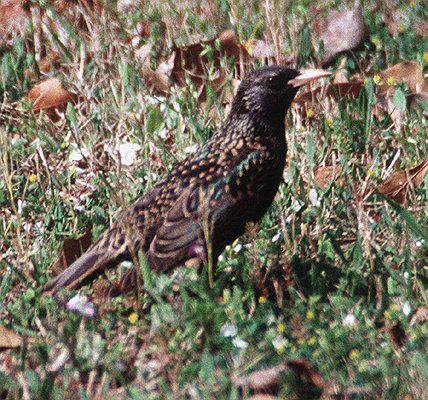 |
|
|
Photo: G. Beaton
|
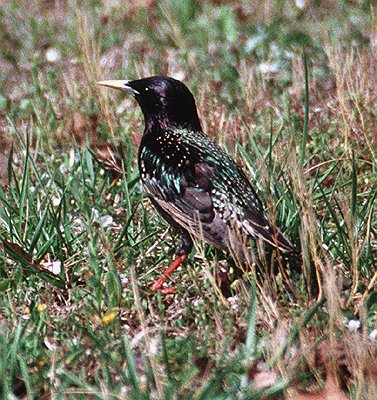 |
|
|
Photo: G. Beaton
|
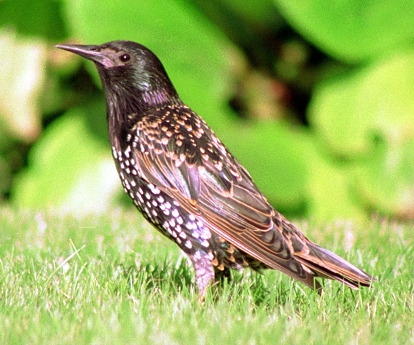 |
|
Winter plumage - Photo: J. Wilson
|
 |
|
|
Winter - Photo: M. Oberle
|
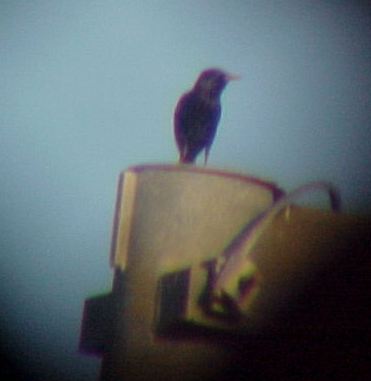 |
|
Luquillo, 21 December 2003 - Photo: J. Salguero
|
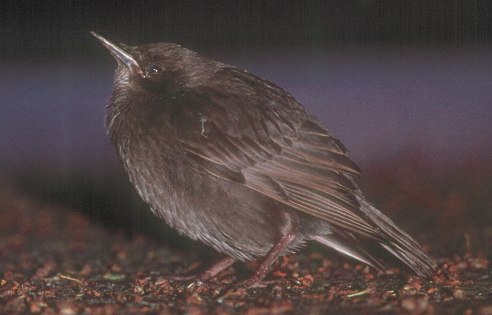 |
|
Juvenile - Photo: M. Oberle
|
|
References Bent, A.C. 1950. Life histories of North American wagtails, shrikes, vireos, and their allies. Smithsonian Instit. U.S. National Museum Bull. 197. (Reprinted by Dover Press, NY, 1965). Cabe, P. R. 1993. European Starling (Sturnus vulgaris). No. 48 in The birds of North America (A. Poole and F. Gill, eds.). Acad. Nat. Sci., Philadelphia, PA, and Am. Ornithol. Union, Washington, D.C. Cabe, P. R. 1999. Dispersal and population structure in the European Starling. Condor 101:451-454. Camacho Rodríguez, M., J. Chabert Llompart, and M. López Flores. 1999. Guía para la identificación de las aves exóticas establecidas en Puerto Rico. Depto. de Recursos Naturales y Ambientales, San Juan, PR. Ehrlich, P.R., D.S. Dobkin, and D. Wheye. 1988. The birder’s handbook: a field guide to the natural history of North American birds. Simon and Schuster/Fireside, NY. Feare, C. and A. Craig. 1999. Starlings and Mynas. Princeton. Martin, T. E., A. P. Moller, S. Merino, and J. Clobert. 2001. Does clutch size evolve in response to parasites and immunocompetence? Proc. Natl. Acad. Sci. U. S. A. 98:2071-2076. Pinxten, R., M.Eens, and R.F. Verheyen. 1994. Communal breeding in the European Starling: Evidence from DNA fingerprinting. Auk 111:482-486. Raffaele, H.A. 1989. A guide to the birds of Puerto Rico and the Virgin Islands. Princeton. Raffaele, H.A. 1989. Una guía a las aves de Puerto Rico y las Islas Vírgenes. Publishing Resources, Inc., Santurce, PR. Raffaele, H.A., J.W. Wiley, O.H. Garrido, A.R. Keith, and J.I. Raffaele. 1998. Guide to the birds of the West Indies. Princeton. Swaddle, J. P. and A.A. Biewener. 2000. Exercise and reduced muscle mass in starlings. Nature 406:585. http://www.utahbirds.org/BirdStory.htm European Starling, Spanish text Next related species in taxonomic order Previous related species in taxonomic order |
|